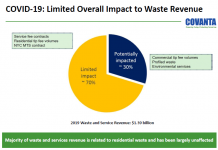Romm v. Kholsa
In a persuasive series of articles, entitled "Pragmatists vs. Environmentalists" (Parts I, II, and III) on Gristmill, Vinod Khosla provides the reasoning behind his "dissing" of plug-in hybrids, which drew the ire of Joeseph Romm. Neither seems to think the argument is settled, and Joeseph Romm returns fire here.
As someone who knows as much about investing as Joe Romm and has written as much about Climate Change and Energy Policy as Vinod Khosla, I feel the need to jump into the debate and settle the matter. (Will either of them will notice?)
To summarize, Khosla argues that cellulosic ethanol shows more promise for reducing carbon emissions than plug-in hybrids because he sees the barriers to plug-ins (the need to improve batteries and clean up the grid) as harder to surmount than the barriers to cellulosic ethanol (the improvement of conversion technology.) In his words,
I consider replacing coal-based electricity plants (50-year typical life) a much longer, tougher slog than replacing oil with biofuels (15-year car life).
Romm blasts back reiterating the multiple problems of corn ethanol in response to the first of Khosla’s series, but has not yet responded to his point about cellulosic. I thought I’d tackle the point about cellulosic myself.
There Isn’t Enough Biomass
According to the National Renewable Energy Laboratory’s From Biomass to Biofuels [.pdf] study, given all the available biomass in the United States, we will only be able to displace a little less than 2 billion barrels of oil equivalent a year. But we currently use about 7 billion barrels of oil a year, so to displace all our oil usage, we would need nearly a 4x increase in fuel efficiency (not the 1.5x increase in internal combustion engines Khosla talks about.)
 |
| Image source: NREL (From Biomass to Biofuels) |
If the problem we’re trying to solve is the need to displace petroleum as the transport fuel of choice (because of both climate change and peak oil), Khosla’s "solution" can at best only tackle about 40% of the problem.
A Third Way: Cellulosic Electricity
Now let’s return to Khosla’s belief that it is simpler to replace the fuel (petroleum) in vehicles than the fuel (coal) in the grid, because of the longer lifetimes of coal plants than cars. If you take a moment to review my article Ten Insights into Carbon Policy, you will note (insight #2), co-firing biomass in existing coal plants is more effective for reducing carbon emissions than turning it into liquid fuels. You will also note (insight #9) that electric drivetrains are inherently more (5x) efficient than gasoline drivetrains.
Khosla may be right that we are not going to shut down old coal plants quickly (although my own utility, Xcel Energy, is planning to do just that.) But even given an existing fleet of coal plant some biomass can be cofired with coal in existing plants with relatively easy retrofits. Cofiring biomass is part of the Arizona Renewable Energy Assessment, which Black and Veatch predict would cost about 6-7 cents per kWh, and the limited amount included in the assessment is mostly due to Arizona’s limited biomass resource.
According to the NREL report referenced above, converting biomass into cellulosic ethanol can be done at about a 45% efficiency (i.e. 45% of the energy of the biomass makes it into the fuel.) In contrast, biomass can be converted at 33-37% efficiency [pdf] when cofired. Combining this with the 5x improvement of drivetrain efficiency that comes with electric propulsion, and the same amount of biomass converted to what I’ll call "cellulosic electricity" will take a vehicle 3.8x as far as it would in the form of cellulosic ethanol. In a more recent article on Biomass, Vinod Khosla states "we consider [Energy Return on Investment] a less important variable than carbon emissions per mile driven." If carbon emissions per mile driven are the most important variable, a 3.8x increase in miles driven on the same energy source will lead to a less than 27% of the carbon emissions per mile driven.
While cellulosic electricity is still not sufficient to displace all of our current petroleum use, it comes much closer than cellulosic ethanol. Biomass cofiring with coal also tends to reduce SOx and NOx emissions.
Direct Combustion of Biomass
Biomass is a distributed resource, seldom available in large quantities in any one place. This will be a problem for the cellulosic ethanol and cellulosic electricity industries. Only a fraction of the available biomass will be close enough to existing coal plants that it will be practical to transport for cofiring. Cellulosic visionaries see a system of distributed ethanol plants, yet that still leaves the problem of getting the fuel to market, since the current pipeline system for petroleum products has difficulty accommodating ethanol.
On the other hand, while distributed direct- fired biomass generation of electricity is probably twice as expensive as cofiring with coal, distributed generation leads to opportunities for Combined Heat and Power (CHP), or cogeneration. CHP can displace heating fuels such as natural gas, propane, or electricity, and often have combined efficiency from 50% to 80%. In addition to the potential of displacing additional fossil heating fuel, cellulosic electricity is identical to the fossil fuel derived kind. Therefore, unlike cellulosic ethanol, cellulosic electricity is completely compatible with the existing electric grid, leading to far fewer difficulties in transport.
A Cellulosic Sideshow
While I’m sure that economic techniques to convert various forms of biomass into ethanol and other liquid fuels will be developed, including by some of the companies in Khosla’s portfolio, I think it is unlikely th
at a large fraction of what is likely to become an increasingly valuable and scarce resource, biomass, will be used for ethanol. As a scarce resource with relatively inelastic supply, the price will rise to the point where only the most efficient uses will be profitable. In most cases, cellulosic ethanol is unlikely to be one of the most efficient uses of biomass.
Khosla’s dichotomy of replacing cars versus replacing coal plants is a false dichotomy. While it is easy to retrofit gas cars to burn ethanol, it is also easy to retrofit coal plants to burn some biomass. Given the dispersed and varied nature of the feedstock, both solutions are likely to coexist for a long time, but biomass cofiring has a little-heralded head start (unlike cellulosic ethanol, it is already progressing beyond the experimental stage), and cofiring’s superior efficiency should allow it to keep, and widen its lead.
But Vinod Khosla will have little reason to weep. His Concentrating Solar Power investments will also be fueling our cars, and his "clean coal" technology has the potential to produce carbon-negative cellulosic electricity.









Very solid analysis, similar to one I have distributed privately.
Note also, with carbon capture and storage, cellulosic ethanol is even more attractive as a climate solution.
Thanks, Joe.
CCS certainly would make cellulosic ethanol more attractive from the emissions per miles driven perspective, but if CCS can be made to work at a affordable prices, would it not be better to apply it to Biomass-to-electricity, given the larger amount of productive work (miles driven) available from a given amount of feedstock?
I believe that Mr. Khosla is a visionary, and his approach has been both sensible and maverick. Mr. Romm has points, but ultimately we must let the market drive us to the best solution.
The best technologies are born from necessity. They must do the following:
1. They must solve a big problem.
2. They must provide the opportunity for those with money to make a lot more money.
3. They must yield to the fact that economic realities trump idealistic vision.
Why waste energy arguing a point, when it is most prudent to simply develop all contending technologies, and let the strongest prevail?
My personal favorite is to blend plasma gasification of municipal solid waste with any one of the many emerging syngas to alcohol technologies, but…..
MAY THE BEST IDEA WIN!
Tim,
If we want to be sucessful investors, we have to be able to pick winners… money we invest in the technologies which do not take hold will be lost.
Mr. Khosla and I have different opinions about which technologies will have the advantage… even he does not enough money to invest in every bright ideas, and I, and most of my readers, certainly don’t!
Tom;
Good point. No one likes to lose money, especially me!
9 out of 10 ideas in this historic new market will fail. But the tenth will bear untold fortunes to those with the courage to invest in it. More importantly, it will help to wean us off the oil, and make the country stronger and more energy independent.
I’d rather lose $1000 on a bad stock than spend it on $3.00/gallon gasoline, wouldn’t you?
TK: I would, but my preference is to make money on my stocks and reduce our fossil fuel dependence at the same time. This is very dificult, but it would be impossible without critical thinking.
On that we can agree, Tom. Focused critical thinking will solve this problem.
I liken Vinod’s approach to the guy who plays roulette, and picks 35 out of 36 numbers. Only the payoff won’t be 35 to 1. More like 1000 to 1.
Very exiting times indeed. As with all investments, patience, prudence, and courage will prevail. I’ve got about 50 different start-ups on my radar screen. I would actually prefer working for one, as I am a mechanical engineer, but for now I’ll wait for the right opportunity.
Take care,
Hmmm… Actually I think you’re all wrong. The most sensible step forward is to burn as much coal as you can, collect all the CO2 produced and mix it with hydrogen produced by electrolysis using renewable sources and bingo, you have methanol.
Methanol is used by the US Champ Car racing series. If it’s good enough for them it’s good enough for us.
Dick,
I think you’re ignoring the lifecycle costs of methanol produced by this method.
Tom ..
When you arrive at a petrol pump and it says “sorry – no more fuel” lifecycle costs are the last thing that you’ll think about.